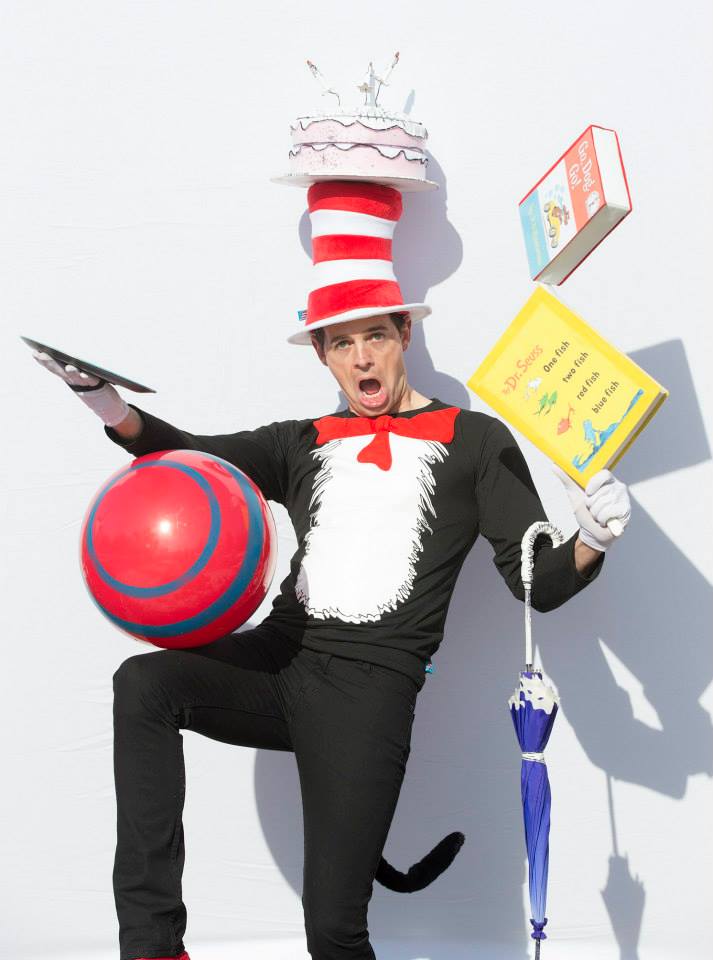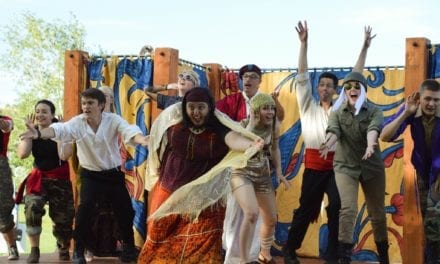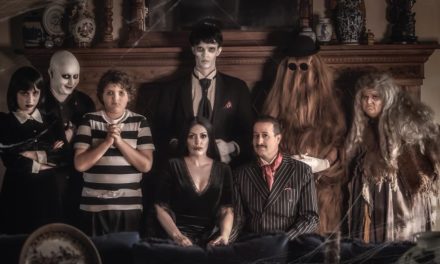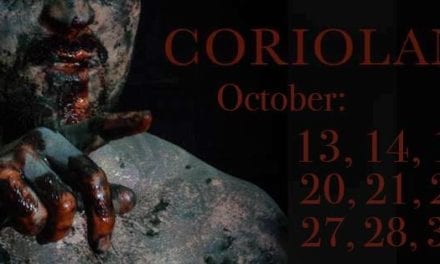OREM — Dr. Seuss‘s The Cat in the Hat, originally published in 1957, has become a staple across a variety of media formats including a 1971 animated musical, a 2003 live-action film, and a stage version in 2009. This stage adaptation originally produced by the National Theatre of Great Britain has come to life on the SCERA Center for the Arts stage as a part of its theatre for young audiences series. While such a well known story can offer little by way of surprising plot, this production seemed to defy the very laws of gravity as it artfully translated the ironically imaginary features of Dr. Seuss’s bestseller into an endearingly entertaining stage production.
One of the most essential elements of theatre that keeps the attention of young audiences is a cast of actors who commit fully to the comedy despite appearing quite foolish to anyone over the age of ten. This became particularly important in this production in which actors would often go for minutes without delivering any specific dialogue. Young siblings Sally (played by McKelle Shaw) and Boy (played by Andrew Walsh) participated in a variety of activities including unsuccessful kite flying before the rain confined them to sit gloomily inside their homes. This entire introductory sequence was performed without a single word uttered between them. In fact, much of the show’s essential communication was done using a variety of “oohs” and “Oh!s” and “ahs” as the characters navigated the various predicaments into which The Cat in the Hat (played by Shawn M. Mortensen) had lead them. One particularly delightful noise was the giggle that came from the puppet Fish, animated by Delayne Dayton. Mortensen, Shaw, Walsh, and Dayton replaced words with body language, which seemed the perfect medium for their audience. It also seemed to mirror the simplicity of Dr. Seuss’s primer which used only words that young children can read.
Even though this was technically a non-musical production, director Julie Nevin should have also received credit for her excellent choreography. The seemingly impossible was accomplished more than once with the help of the kittens (Shellee Heron, Kaysie Norton, and Audrey Patten) who acted as extensions of the Cat and intricately choreographed slow motion sequences. I sat in awe as I watched Mortensen stand on one leg atop a ball, deftly balancing three books on his left hand, a teacup and cake both on his famous striped hat, and a fish on top of the rake in his right hand. Of course most of the tricks were in plain sight, but as I watched each item careen toward the floor when the load became too much, I simply didn’t care. The whole thing was so cleverly orchestrated (with the smart use of velcro, dowels, and straps included in Christy Norton’s props design) that my focus was on how closely the final picture resembled the book’s original illustrations.
Actually, in many ways it was the technical aspects of this production that brought Seuss’s images to life. The set, designed by Nat Reed, perfectly mimicked Seuss’s minimalistic illustrations including the illusion of shading provided by a few well-placed angled lines. This artistic style was visible on the edges of each of the wing-like walls that flanked the stage and on each of the productions larger set pieces including Sally and Boy’s window and the box containing Thing 1 (played by Marshall Madsen) and Thing 2 (played by Cody Whitlock). Light design by Seth Mergist added color to each scene by pouring a wash of light onto a white background. My favorite lighting effect was the rain that fell at the beginning of the show. Somehow, Mergist’s lighting design presented an animated version of the diagonal rain drawn in the original book.
Kendall Bowman, the show’s sound engineer, timed sound effects perfectly with the pantomimed actions on stage. These sound effects made crashing bicycles and bouncing balls seem real, despite not being visible. My favorite audio moment was when the directional focus of the cast combined with the changing directional audio, and I turned in my seat, expecting to actually see a bicycle circling the theater’s house. Finally, Norton’s props were designed to meet the strange needs of the show: being aesthetically exciting, having Seuss-esque shapes, and being unbreakable (the most important requirement). I was truly amazed at the number of items that were forcefully flung at one point or another with no lasting damage to the props.
It was evident that theater for young audiences is something with which the SCERA Center for the Arts has some experience. From the booster seats located at the theater’s entrance to the reasonably priced kids combo at the concession stand (popcorn, drink, and treat all for $2.00!), the experience seemed designed for the ultimate viewing pleasure of the four-year-old son I brought with me. At less than an hour, this production was a great length for his short attention span. Much like the book, this production truly is intended for a young audience. But while the script is geared for the early elementary crowd, the mesmerizing technical effects make it an enjoyable production even for the adult chaperones.









